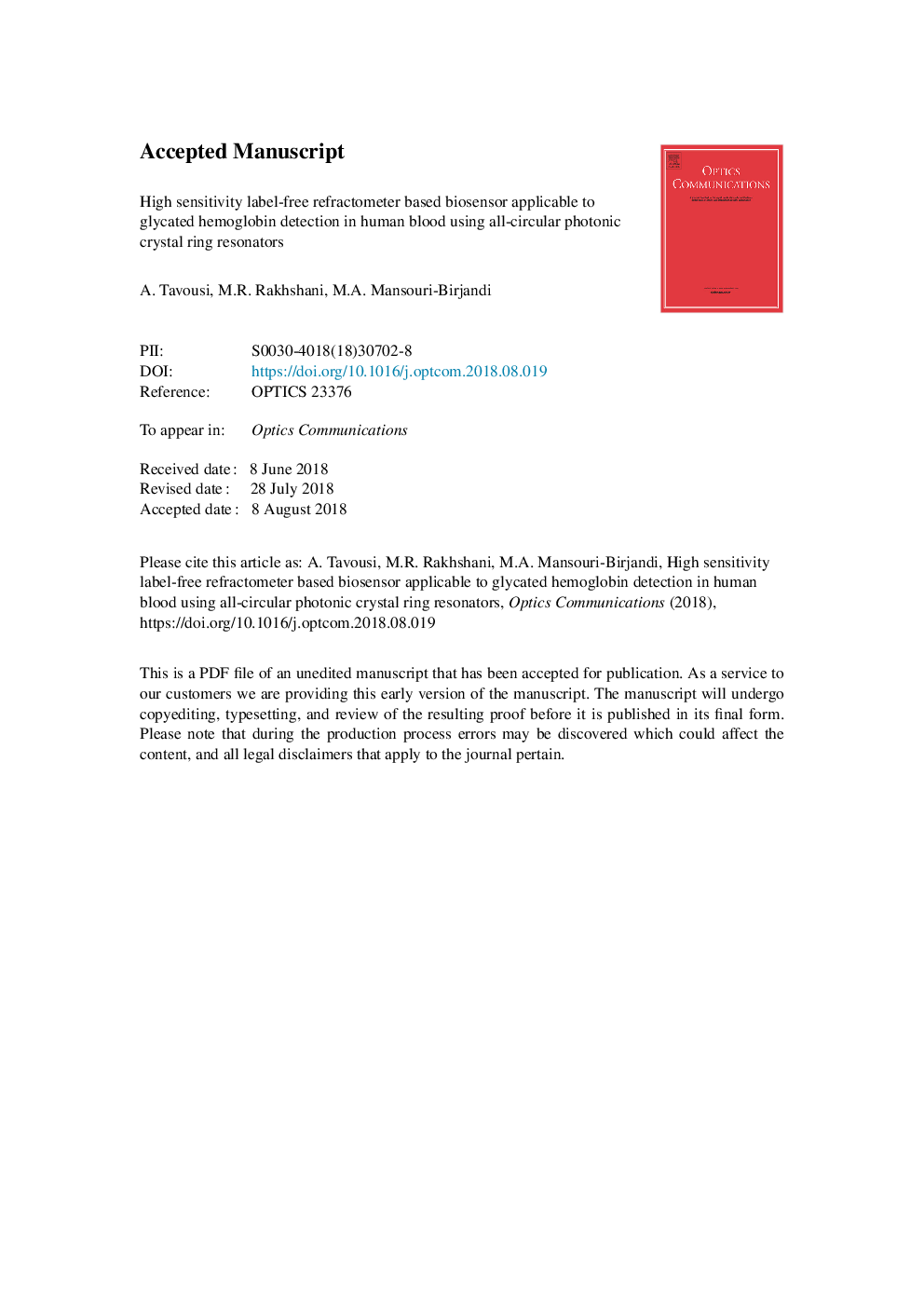| Article ID | Journal | Published Year | Pages | File Type |
|---|---|---|---|---|
| 7924496 | Optics Communications | 2018 | 20 Pages |
Abstract
Lab-on-a-chip integrated optical biosensors have shown useful in non-invasive detection of biomaterials. Furthermore they are immune to electromagnetic interference rather than their electronic counterparts. In this paper, an all-optical photonic crystal (PhC)-based biosensor is presented. The biosensor is made up of two PhC-based W1 waveguides which are critically coupled to a PhC-based ring-resonator (RR). The hub of the ring is designed in an all-circular quasi-crystal fashion to enhance output efficiency as well as easy injection of analyte. This PhCRR can distinguish 85 ± 15% of amplitude change via resonant wavelength shift of 0.75 ± 0.15 nm, or equally a 0.005 change in the refractive index unit (RIU). By introducing any change in the optical characteristics of desired biomaterials (i.e. refractive index of glycated hemoglobin), the resonance frequency of resonator changes and due to its high quality factor and sensitivity, a large amplitude difference appears in the output. The proposed glycated hemoglobin biosensor works in the wavelength interval of 1.545-1.565μm, and its quality factor, figure of merit (FOM) and sensitivity are calculated to be 2500±500,1400±200 RIUâ1 and 690 ± 50 nm/RIU, respectively. The simulations are performed in two-dimensional and finite difference time domain (FDTD) algorithm is used to numerically solve time-dependent Maxwell-equations within propagation domain.
Related Topics
Physical Sciences and Engineering
Materials Science
Electronic, Optical and Magnetic Materials
Authors
A. Tavousi, M.R. Rakhshani, M.A. Mansouri-Birjandi,
